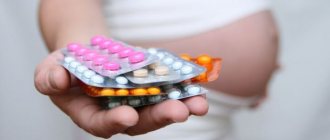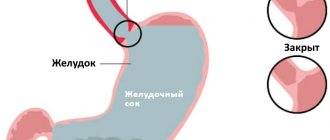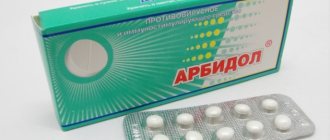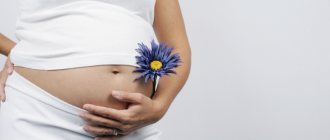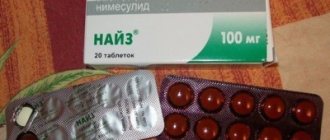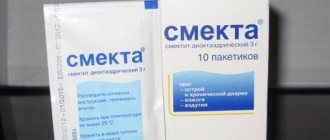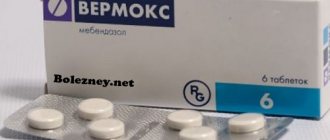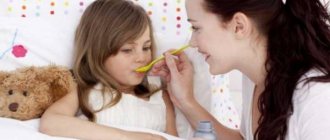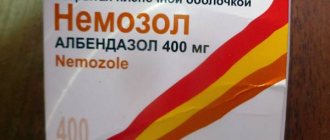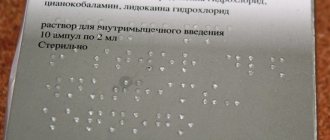Recently, more and more married couples are faced with a diagnosis of infertility. It can be provoked by various factors, including a persistent lack of ovulation in a woman. In this case, the doctor may suggest treatment with Clostilbegit. How effective is the drug, how to take it correctly? How will such therapy affect the female body?
- 2 Indications for use
2.1 Video: anovulation and its causes (explained by a gynecologist-reproductologist)
- 2.2 How effective is Clostilbegit?
- 3.1 Probability of multiple pregnancy
- 4.1 Clostilbegit and alcohol
- 6.1 Table: functional analogues
6.1.1 Photo gallery: analogues of Clostilbegit
Clostilbegit as a medicine
The active ingredient of Clostilbegit is clomiphene citrate. This is a synthetic stimulator of the ovulation mechanism; in itself it is not a hormone, but has a direct effect on their production. Clomiphene acts on estrogen receptors in the female body (in the ovaries and pituitary gland) and binds the hormone estrogen in them. It is as if the body “does not see” its estrogens and begins to intensively produce them. As a result, the follicles mature and ovulation occurs. If a woman produces her own estrogens in excess (sometimes ovulation does not occur precisely for this reason), then the drug simply normalizes their level.
At the same time, the production of follicle-stimulating (FSH) and luteinizing (LH) hormones, as well as prolactin, is activated.
Clostilbegit also contains a number of auxiliary ingredients:
- magnesium stearate;
- lactose monohydrate;
- stearic acid;
- talc;
- potato starch, etc.
The product is available in the form of tablets weighing 50 mg. They are round and flat, white, odorless, packaged in dark-colored bottles or blisters (both packages contain 10 tablets).
Clostilbegit is packaged in dark-colored bottles or blisters
Clostilbegit tablet is absorbed quite quickly in the intestines, spreading to all tissues. The drug is excreted from the body mainly along with bile. The half-life is approximately a week.
In large doses, Clostilbegit inhibits the secretion of gonadotropins (hormones that regulate the functioning of the sex glands). And the drug was originally developed in the 50s. as a contraceptive. After additional research in the 60s. the drug was included in the complex of infertility therapy.
What is the price of the drug in pharmacies?
Clostilbegit is far from a cheap drug, so during therapy with it you should be careful about your body. The average price for Clostilbegit varies in the range of 600-1000 rubles for 10 tablets in a bottle (dosage - 50 mg), depending on the pharmacy markup and the region. The manufacturer is the Hungarian company Egis.
About traditional medicine: is oregano allowed during pregnancy, what do reviews say about it?
What antihistamines can be taken during pregnancy will be discussed in this article.
Sea buckthorn suppositories for hemorrhoids: https://mamafarma.wpengine.com/hemorrhoids/svechi-s-oblepihovym-maslom.html.
Indications for use
Clostilbegit is prescribed to women for infertility caused by a specific reason - lack of ovulation. This may be complete anovulation or the presence of very rare ovulatory cycles. In some cases, women experience amenorrhea (absence of menstruation) or pathologically long cycles (the follicle takes a very long time to mature, which is why there are fewer attempts to conceive during reproductive age).
Ideally, ovulation should occur every month in the middle of the cycle
In general, a healthy woman can have anovulatory cycles 2-3 times a year (after 30 years, their number increases). And that's absolutely normal. But if anovulation is observed constantly, then the woman becomes simply unable to conceive a child: this requires a mature egg, which does not exist.
The following reasons can block ovulation:
- hyperprolactinemia. This is an increased secretion of prolactin in the body, which prevents the growth of follicles;
- polycystic ovary syndrome. The disease causes hormonal imbalances;
- ovarian resistance. This is a condition in which they do not respond to sex hormones;
- thickening of the ovarian capsule. In this case, the follicles mature, but cannot rupture;
- diseases of the thyroid gland, adrenal glands. They also cause hormonal imbalance;
- depletion of ovarian reserve. Each woman has her own (set at birth), and when there are few eggs left, ovulation can occur very rarely;
- tumors of the pituitary gland and hypothalamus;
- infectious diseases, decreased immunity;
- prolonged strong physical activity (for example, among athletes);
- prolonged stress.
- a sharp change in body weight in one direction or another (as a rule, due to metabolic disorders);
Interestingly, Clostilbegit is sometimes prescribed to men with weak sperm activity, oligospermia (a decrease in the total amount of sperm that is released during ejaculation). The drug reduces the increased synthesis of estrogen and stimulates the secretion of testosterone, which leads to an improvement in the quantitative and qualitative parameters of sperm.
Video: anovulation and its causes (explained by a gynecologist-reproductologist)
How effective is Clostilbegit?
As for the effectiveness of Clostilbegit, according to statistics, after six therapeutic courses (this is the maximum allowed amount in a lifetime), conception occurs in 60–70% of women.
It should be noted that the course of such a pregnancy is often associated with an increased threat of early termination and a greater manifestation of toxicosis.
At the same time, pregnancy after the first cycle of stimulation is not observed very often - in approximately 13% of cases. With each subsequent cycle, the chances of conception increase. It is important that a woman can become pregnant even after completing a three-month course - the cumulative effect of clomiphene is triggered, and within a few months her own full ovulation can occur without taking the drug.
When stimulating ovulation with Clostilbegit, success largely depends on the competence of the doctor. He must fully examine the married couple, make sure that there are no other problems that interfere with conception, in addition to anovulation (for example, it is very important to exclude obstruction of the fallopian tubes or immunological incompatibility with the partner). In addition, during the stimulation cycle it is necessary to carry out an ultrasound examination (monitoring) several times: first, monitor the growth of the follicles, and then make sure that the corpus luteum is formed (a sign of ovulation).
If you do not take into account all the nuances, then the chances of pregnancy when taking Clostilbegit are significantly reduced.
The stimulation process must be accompanied by ultrasound monitoring
Probability of multiple pregnancy
Treatment with Clostilbegit increases the likelihood of having twins. This is due to the fact that not one, but several eggs mature at once. This is especially true for women with multifollicular ovarian syndrome. Even without taking pills, they are prone to multiple ovulations . And during the reception, the probability increases significantly. According to statistics, 20% of women who undergo stimulation give birth to twins.
CAREFULLY! Stimulant drugs significantly deplete the ovaries. Therefore, you should not carry out stimulation more than five times in your entire life.
Contraindications and side effects
Such a serious drug as Clostilbegit, which changes the hormonal levels of the body, has contraindications:
- pregnancy and lactation;
- an existing ovarian cyst (there is a high probability of its rupture during stimulation);
- oncological formations in the reproductive organs;
- liver pathology (after all, this organ is responsible for the metabolism of clomiphene), it is very important to examine it before stimulation;
- uterine bleeding in the past;
- diseases of the thyroid gland, adrenal glands;
- intolerance to some component of the drug (for example, lactose);
- diseases of the visual apparatus.
Side effects when taking Clostilbegit are not uncommon:
- the risk of cyst formation; in rare cases, ovarian rupture may occur (when too many follicles mature and reach large sizes);
- an increase in the likelihood of an early onset of menopause (after all, the ovaries work in an intense mode, spending their reserves);
- nausea, vomiting, pain in the abdomen, diarrhea, flatulence;
- weakness, drowsiness, inhibition of reactions (this is why it is not advisable to drive a car while taking Clostilbegit);
- skin rash;
- insomnia;
- increased anxiety, depressive states;
- increased appetite, weight gain;
- vision problems (blurred vision, spots, flashes);
- the appearance of dryness in the vagina, lumps in the mammary glands.
With an overdose of the drug, the likelihood of adverse reactions increases. In addition, they may be more pronounced.
Taking Clostilbegit increases the risk of developing an ovarian cyst.
Probability of multiple pregnancy
A “side effect” from taking Clostilbegit may be multiple pregnancies (although for many infertile couples this effect can be very desirable). This is experienced by 12% of women taking Clostilbegit. Indeed, as a result of artificial stimulation, more follicles mature than during the natural process, and two or even three of them can ovulate at once.
Statistics indicate that in such a situation there is no reason to worry about the development of embryos and possible abnormalities in children after birth.
Analogues of the drug
The drug has an analogue, that is, the active ingredient is identical - clomiphene, this is Fertomid, unlike Clostilbegit, it is available in three dosages - 100 mg, 25 mg and 50 mg. There are also other analogues of Clostilbegit:
- Clomid,
- Clomiphene citrate,
- Serophene,
- Serpafar.
Attention. Despite the fact that the drugs are identical in action to Clostilbegit, you cannot independently decide to replace it with an analogue. Only a doctor can change the drug to an identical one.
Drug interactions
Taking Clostilbegit, as a rule, is combined with other drugs necessary to maintain normal hormonal levels:
- Proginova. Contains an estrogen analogue. The drug stimulates endometrial growth, which is often inhibited when taking clomiphene;
- Human chorionic gonadotropin (hCG). An injection of this substance is necessary to ensure that the follicle ruptures and an egg is released from it and ovarian cysts do not form;
- Duphaston (or Utrozhestan). This is a synthetic analogue of progesterone, it is taken to minimize the risk of miscarriage due to insufficient functioning of the corpus luteum.
Often the use of Clostilbegit is combined with Utrozhestan
Clostilbegit and alcohol
In general, it is extremely undesirable for a woman planning a pregnancy to drink alcohol, which can have a detrimental effect on the implanted embryo. When taking Clostilbegit, this is completely prohibited. The fact is that the combination of clomiphene and ethyl alcohol threatens liver disease (too much load on this organ), increased side effects and intoxication of the body. In addition, even a small dose of alcohol can potentially negate the effect of the drug.
Side effects
An overdose of the drug can cause:
- nausea and vomiting;
- dizziness and headache;
- depression;
- tides;
- visual impairment;
- anxiety and insomnia;
- pain in the lower abdomen;
- increased fatigue;
- increase in body weight.
All these symptoms disappear after stopping treatment with the drug.
The instructions for use of Clostilbegit contain recommendations not to use it more than 5-6 times in a lifetime, since abuse can lead to early menopause, exhaustion, hyperstimulation or rupture of the ovaries, hormonal disorders, ovarian cysts, etc.
to contents ^
Nuances of use when planning pregnancy
Only a gynecologist prescribes ovulation stimulation for a woman. He also selects the necessary dosage regimen (dosage and course duration). The doctor takes into account the woman’s weight, age, regularity of her menstrual cycle and other indicators.
Meanwhile, the dosage regimen for Clostilbegit, presented in the instructions for the drug, is most often used. From days 5 to 9 of the menstrual cycle, a woman takes one tablet (5 days in total) at a dosage of 50 mg, sometimes 1.5 tablets are prescribed - 75 mg. Take the medicine with water, do not chew it.
On the 10th day, you need to do an ultrasound, which will determine how many follicles have grown and what size they are. This study is repeated every other day (in medicine it is called folliculometry) until the doctor records that one or more follicles have reached the desired size (approximately 18–25 mm). In this case, the woman is given an injection of hCG, due to which the follicles will burst and the eggs will be released - this usually happens over the next 24 hours (the injection dose is again selected by the doctor). At this time, the gynecologist recommends that the patient have an active sex life, including another two days after the expected ovulation.
Of course, ovulation can occur without an injection, but doctors usually play it safe. In addition, this injection causes overgrown follicles to burst, preventing them from developing into cysts.
When the follicle reaches the desired size, the woman is given an injection of hCG, which will help the egg to be released.
Simultaneously with the start of taking Clostilbegit, the patient drinks Proginova - until the 21st day of the cycle. The drug helps to grow the endometrium necessary for conception. A few days after expected ovulation, an ultrasound is also necessary: it should detect the presence of a corpus luteum (or two or more).
The day after the injection, the doctor prescribes the woman progesterone support - the drug Duphaston (as an option Utrozhestan). Traditionally, it is taken for 10 days: starting from the 15th day of the cycle (most often ovulation occurs at this time, although it is possible later or earlier). After the last day of taking it, you need to take a pregnancy test, or better yet, donate blood for this hormone. If it is positive, the woman continues to take synthetic progesterone; if it is negative, she stops taking it and waits for her period.
There is no point in taking the test earlier than 10 days after the hCG injection: in the first days it will be positive in any case, until the synthetic hormone is removed from the body. Once fertilization has occurred, the embryo will begin to secrete its hCG after implantation.
If a woman’s follicular phase is relatively short (10–12 days), then it is better to start therapy with Clostilbegit already on the 3rd day of the cycle (from the 3rd to the 8th day inclusive). Accordingly, ovulation will most likely occur earlier, so you will need to drink Duphaston earlier. If there are no periods at all, therapy can be started on any day (also 5 days of taking 50 mg of the drug).
Pregnancy can occur during a break between courses of Clostilbegit
If pregnancy does not occur in the first cycle of stimulation, the doctor prescribes a second and third, and, if necessary, adjusts the dose of Clostilbegit. After this, if the result is negative, a break of at least six months is required, after which three cycles of stimulation are prescribed again. It must be remembered that pregnancy very often occurs during this rest interval, since clomiphene has a cumulative effect, ovulation will most likely occur on its own after three cycles of treatment.
In total, only 6 cycles of stimulation can be performed in a lifetime. With a larger number, a woman runs the risk of “earning” ovarian depletion and early menopause.
As for taking Clostilbegit by men, doctors usually prescribe 50 mg 1-2 times a day. The standard course is 6 weeks, during which it is important to monitor the sperm count.
Properties of Clostilbegit
It belongs to the group of antiestrogens. The main active ingredient in the drug is clomiphene citrate. It acts in a very interesting way: in small doses it exhibits its antiestrogenic activity, and in large doses, on the contrary, it exhibits estrogenic activity.
Do not rush to be afraid of unfamiliar words, I will explain everything to you. The drug affects the endocrine glands, which are located in the brain. In response to this effect, they begin to produce hormones that are necessary for complete ovulation.
Within 5 days from the start of administration, the amount of hormones estradiol, LH and FSH in the blood increases. They ensure normal maturation of the egg and prepare it for release from the follicle. I note that when treated with Clostilbegit, several follicles often mature at once. So, my dears, you may well become parents of twins and even triplets.
An estrogenic effect can be obtained by using Clostilbegit in increased doses. In this case, the medicine has the opposite effect on hormones. It acts on the ovaries in such a way that they begin to intensively produce estrogen, which inhibits the formation of gonadotropic hormones (LH, FSH, estradiol). Therefore, if you are taking a course to stimulate ovulation, do not exceed the prescribed dosage of the drug.
Structural and functional analogues of Clostilbegit
Clostilbegit has several structural analogues (preparations with the same active ingredient clomiphene):
- Clomid,
- Clomiphene,
- Serophene,
- Serpafar.
They have the same contraindications and require one method of use (dose and duration).
In addition, there are a number of functional analogues, which, having a different composition (different active substance), are also aimed at restoring the ovulation process in the body in its absence.
The most appropriate drug and its dosage should be selected by the attending physician.
Table: functional analogues
| Name | Release form | Compound | Contraindications | General regimen |
| Gonal-F | Solution for injection and lyophilisate (powder that must be dissolved in liquid when used). | Follitropin alpha (in 0.5 ml solution - 22 mcg). The active substance is synthesized from animal germ cells (Chinese hamster). It causes the growth and development of several follicles at once. |
| The drug is administered subcutaneously or intramuscularly (a solution is prepared immediately before administration). Therapy begins in the first 7 days of the cycle. Initially, these are daily injections with a dose of 75–150 IU (0.13–0.25 ml of solution), with an interval of 4 or 14 days, the dose is increased by 37.5 IU -75 IU until the effect appears. The maximum dose of daily injection is no more than 225 IU (0.38 ml). Folliculometry is also performed. When the follicle reaches the desired size, an hCG injection is prescribed. For men, Gonal is usually prescribed at a dose of 150 IU (0.25 ml) three times a week. Duration of treatment is from 4 to 18 months. |
| Menopur | Lyophysilate in 2 ml bottles or 1 ml ampoules complete with saline solution. | Follicle-stimulating hormone (FSH) - 75 IU in one bottle; luteinizing hormone (LH) - 75 IU in one bottle. |
| Dissolved lyophysilate is administered subcutaneously and intramuscularly - 1-2 bottles per day. If the ovaries do not respond, the dose is increased until the result is achieved. When the follicles reach the desired size, an hCG injection is prescribed. To improve spermatogenesis, men are advised to administer Menopur at a dose of 1000–3000 IU three times a week. Treatment continues until testosterone levels normalize. |
| Puregon | Solution in bottles and cartridges. | Follitropin beta - 50 or more IU (depending on the volume of the bottle or cartridge). |
With caution when:
| The first 7 days of the cycle - 50 IU daily. If there is no reaction, the daily dose is gradually increased. When the follicle reaches the desired size, hCG is injected. Men are prescribed 450 IU 3 times a week in combination with hCG. The course of treatment is at least 4–6 months (up to 1.5 years). |
Photo gallery: analogues of Clostilbegit
Menopur contains the hormones FSH and LH, which cause the growth of follicles and their subsequent rupture
The active ingredient of Puregon is follitropin beta
The active ingredient of Gonal-F is follitropin alpha, which causes follicle growth
Ovulation stimulation
Stimulation of ovulation with hormonal drugs is carried out only if the gynecologist diagnoses “absence of her own ovulation”, while the woman does not restore her own ovulation. This drug artificially provokes the possibility of fertilization for a certain period, during which it is quite possible to become pregnant.
Treatment with such drugs is carried out only after a comprehensive examination. Particular attention is paid to finding the cause of disruption of natural ovulation, which may consist, for example, in abnormal levels of thyroid hormones, adrenal glands, etc. In some cases, the equalization of hormonal imbalance resumes the correct processes in the female body, and conception can occur without stimulation.
to contents ^
Contraindications for use
The main contraindications to the use of Clostilbegit are the following diseases:
- Ovarian cyst. An exception is polycystic ovary syndrome. This disease is one of the main indications for the use of Clostilbegit.
- Dysfunction of the pituitary gland, thyroid gland or adrenal glands. These pathologies can cause anovulation. In this case, to overcome infertility and restore ovulatory processes, it is sufficient to compensate for dysfunction of the endocrine organs.
- Uterine bleeding of unknown origin. They may indicate an undiagnosed oncological pathology. Therefore, a thorough examination is required before starting treatment.
- Insufficiency of ovarian function. In this case, the use of Clostilbegit is futile. It will not lead to the restoration of ovulation. Overcoming infertility is only possible through IVF with donor oocytes.
- Hyperprolactinemia. Elevated levels of prolactin lead to inhibition of the production of gonadotropins in the pituitary gland. Therefore, ovulation induction should be carried out only after normalization of prolactin levels in the blood. However, this is often enough to restore ovulatory processes. Therefore, Clostilbegit may not be required after hyperprolactinemia has been eliminated.
Other contraindications:
- Pregnancy and lactation.
- Insufficiency of liver and kidney function.
- Endometriosis.
- Oncological formations of the reproductive system.
- Visual impairment. Before starting treatment, consultation with an ophthalmologist is recommended.
- Pituitary tumors.
